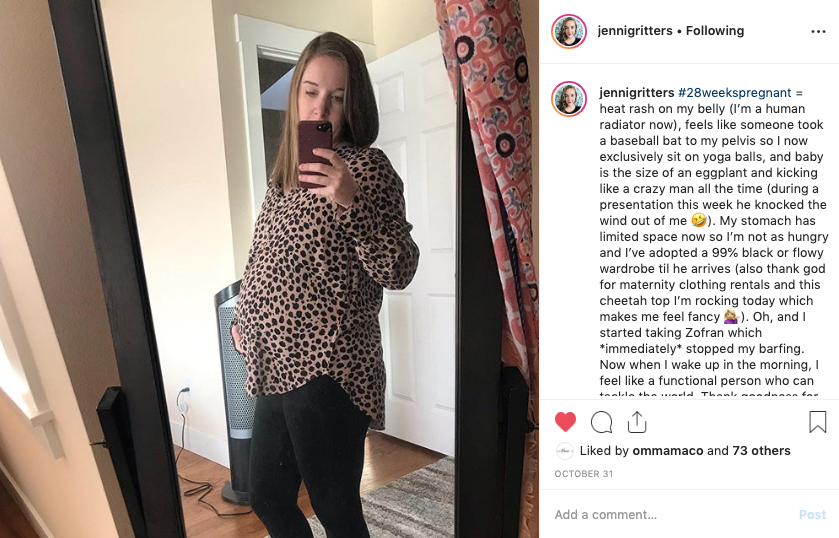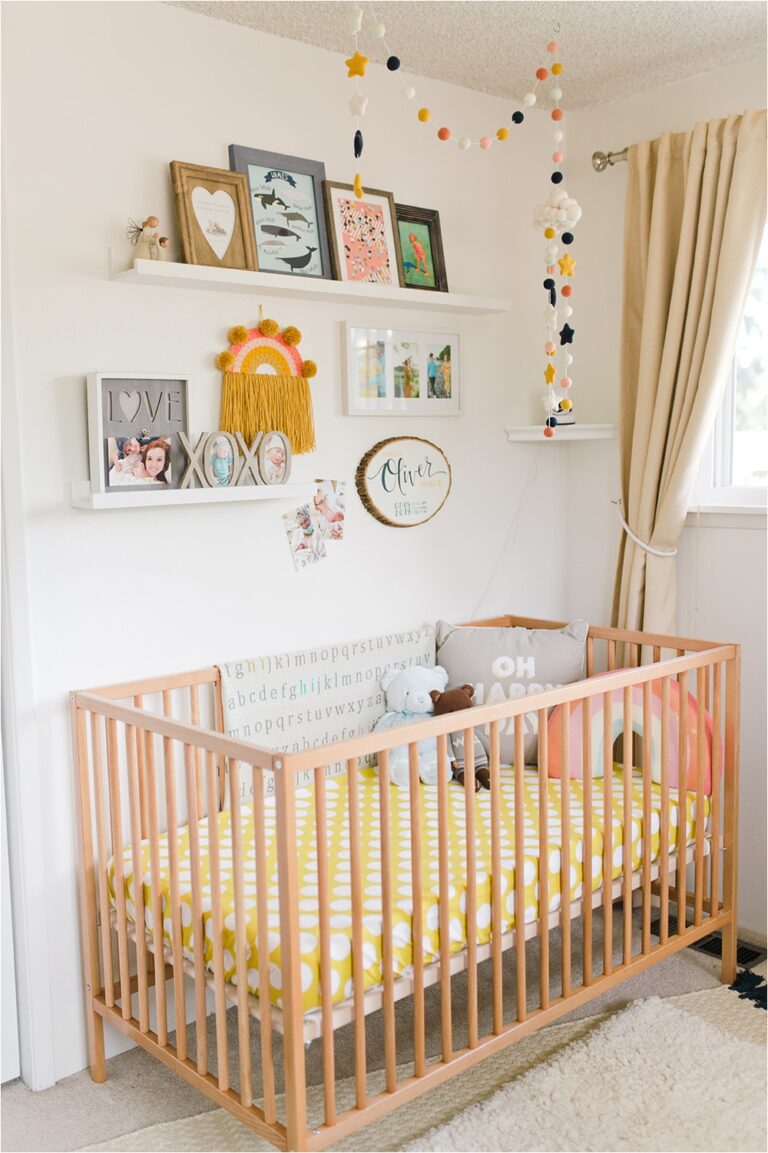Guest post by Mama member, Jenni Gritters! Jenni is a Seattle-based freelance journalist and founder of Zest Storycraft. She writes mostly about the science of healthy living and is a certified yoga instructor. Jenni and her husband are currently expecting! You can follow Jenni on Instagram. Learn more about Jenni here!

When I found out that I was pregnant, one of my first thoughts was, What about my small business? How in the world would I run my writing and editing business while taking care of a baby? And perhaps most importantly, how would I take maternity leave while I was self-employed? I really wanted to take a full three months off to bond with the baby but as other freelancers may know, this isn’t an easy ask.
Because I’m a journalist by training, I leaned into what I knew best: research. I talked to everyone I knew about how they’d planned their maternity leave, especially if they were in a non-traditional setting. I read dozens of blogs and pursued government websites. I even pitched stories about it to freelancer-focused websites, like Contently. (That story is forthcoming next month.)
Here’s what I ended up doing, to make time for me and my baby boy, due January 2020.
First, my husband and I had a big talk about finances
We mathed out how much money we needed to save up if we both wanted to take a full 12 weeks off to bond with our first kiddo. To find these numbers, we went through our monthly budgets and looked at how much we thought we’d spend with a baby here. (My smart financial planner told us that we should assume that big “breweries/ restaurants/ bars” category would quickly be reallocated to “baby,” meaning that overall our numbers wouldn’t change that much.)
Once we had our goal numbers, we had to figure out how to make that extra money.
Next, we looked at what benefits we might qualify for
My husband doesn’t get paid leave, even though he’s a nurse. (He can take 12 weeks off without penalty, but there’s no compensation for it. Yay America!). I also don’t get any built-in maternity leave given that I work for myself. But, happy news: Washington state, where I live, just implemented a Paid Family Leave Program, which kicks in January 2020– just in time for our baby to show up! That program covers anyone who’s had a baby in the last calendar year, as well as anyone who has a baby from January onward. There are a lot of rules about who qualifies for this benefit but the good news is that it’s the most generous leave policy in the U.S. at the moment, offering 12 weeks of paid time off to bond with a child (16 if you have a C-section) for both parents, and an up to 90% reimbursement of your salary up to $1,000 per week. Yeah, it’s great.
Sean easily qualifies for this program, which he’ll have to apply to once the baby arrives. As a self-employed person, I also qualify– but the program is so new that they don’t yet have a self-employment portal built. I’ve been told that I’ll likely receive coverage for my maternity leave retroactively and will need to pay into the program for the next three years in order to qualify (at a rate of about $5/ month). We’ll see how that maps out, but I’ve been pleasantly surprised by how helpful the PFML people are on the phone! They’re very excited about our baby.

Once we knew about the benefits, we looked at the math again
We could see that we’d need cash flow to cover my half of the leave (but we’d likely get that money back later in the year), so we made a plan to put several thousand dollars into savings each month to cover the time away. My biggest worry was that I’d be holding my newborn and back at my computer within a few weeks, something I’ve heard freelancers talk about for years. Instead of stressing, I needed to know that we were covered– and as of now, we’re only a few thousand dollars away from our savings goal, with several months still ahead of us. We set aside extra savings by cutting back on vacations and meals out with friends and working extra when possible.
For what it’s worth, I’ve also heard of people using short-term disability policies
Some people get these policies through work, and others apply for them before they know they’re pregnant. One important note, though: Pregnancy counts as a pre-existing condition so you must sign up for the insurance before you’re pregnant. Some plans require you to pay into them for three to six months before you get pregnant! This requires a lot of advance planning, which we didn’t have time to think about.
After I had my finances set up, I talked to my clients
I let each of them know about my situation in a straight-forward way, offering my likely maternity leave dates and providing plans for getting them extra content beforehand. This means I’ve been working my butt off for the last few months, hustling to hand off all of the content I can before the holidays hit. While it’s not ideal to be working hard while pregnant, my clients have been very accepting of the situation. One client even wrote my maternity leave into my retainer contract, which is totally incredible!
I also have plans for reintegrating back into work come April
I’ve heard that as a freelancer, it can be a struggle to get things back up and running to full speed quickly. I also get paid at a 30-45 day delay after submitting assignments, so I know I’ll be feeling the lack of paychecks pretty intensely about three months into my leave.
To solve for this, I’ve banked lots of ideas that I can send out to editors once I’m back in the swing of things. I’ve set up some stable gigs that should be easy to jump back into once I’m ready to return to work. And I’ll also be using January, while I wait for the baby to come, to do some organization and auditing tasks, so my business is set up nicely for my return.
If you’re worrying about planning your leave and wanting to put out content while you’re gone, especially on social media, I also met an amazing woman during this process who runs a company called Biz Babysitters, and she does just that. She’ll answer emails for you and make sure it looks like you’re still rolling along with your marketing, and you can work with her to set up administrative support for billing. Such a great idea!
Of course, I haven’t taken my leave yet– so I’ll let you know how it goes come January!
But I’ve learned a lot in the process of setting this up and wanted to share the good information. If you’ve taken a long bit of leave while working for yourself, comment below with your tips. I’d love to hear them!

Learn how other mamas make it work at our FREE online, live webinar on Thursday, December 12th! We’ll talk with a panel of mamas about how they “do it all”! Details here!






